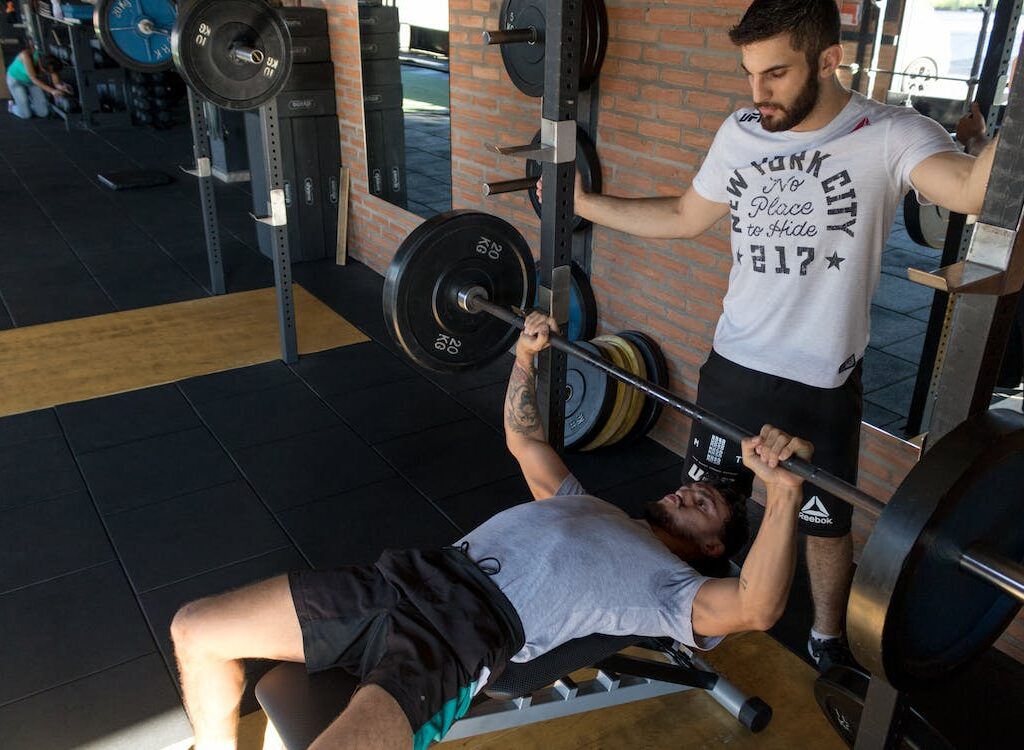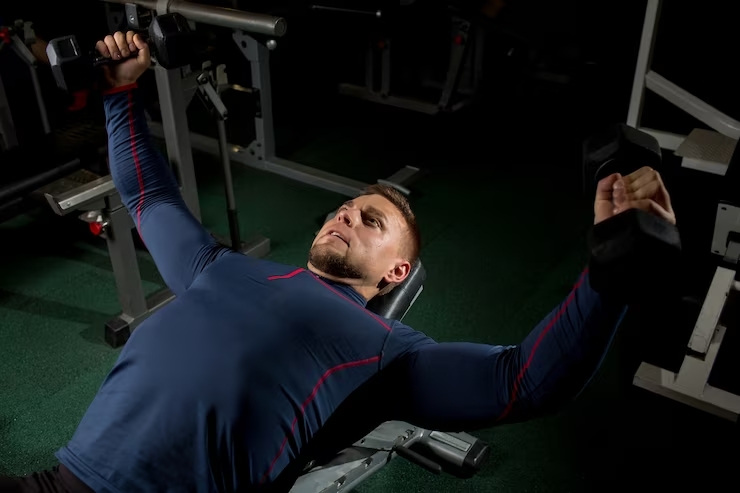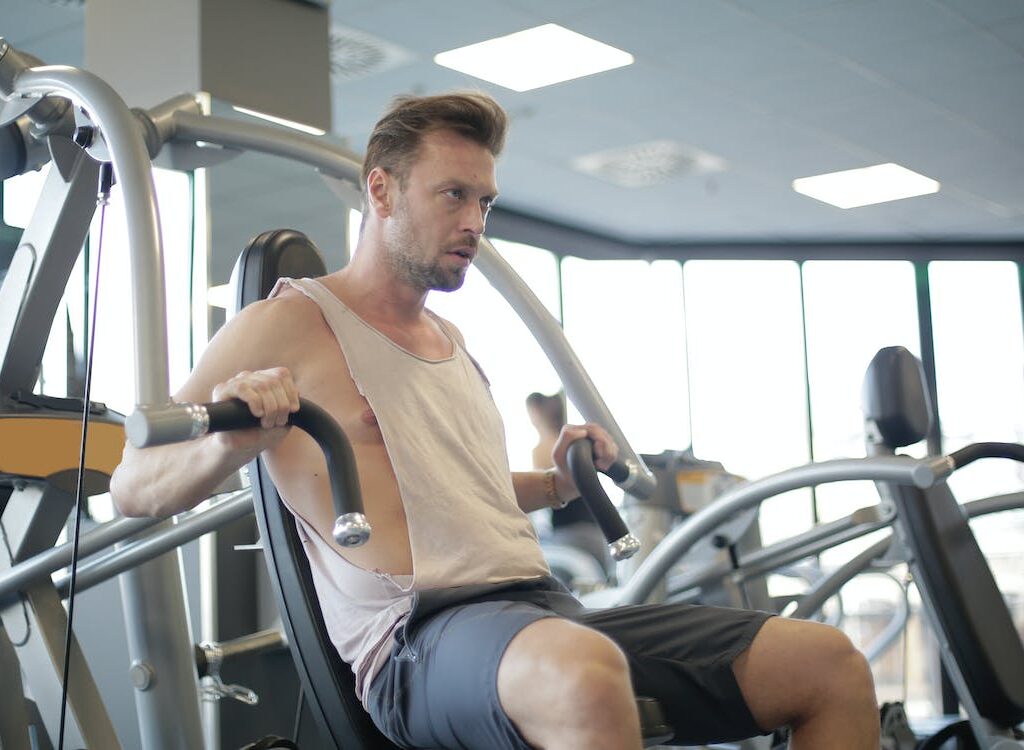Introduction:
If you aspire to have a well-defined and strong upper body, focusing on your chest muscles is crucial. A well-rounded chest workout routine not only enhances your physical appearance but also improves your upper body strength and functional fitness. In this article, we will explore the world of chest workouts, from basic exercises to advanced techniques, helping you achieve the chest of your dreams.
Understanding the Importance of Chest Workouts:
The chest muscles, scientifically known as the pectoralis major and pectoralis minor, play a vital role in various upper body movements. They are involved in pushing, pulling, and stabilizing the shoulders during daily activities and sports. Engaging in regular chest workouts helps strengthen these muscles, enhancing your overall upper body strength and posture.
Benefits of a Strong Chest:
A well-developed chest not only adds aesthetic appeal but also provides several functional benefits. Here are some advantages of incorporating chest workouts into your fitness routine:
Increased Upper Body Strength:
A strong chest allows you to perform everyday tasks with ease and excel in activities that involve upper body movements, such as lifting, pushing, and throwing.
Enhanced Posture:
Strengthening your chest muscles helps correct muscle imbalances and promotes proper alignment of the shoulders, leading to improved posture and reduced risk of postural issues.
Injury Prevention:
A robust chest acts as a stabilizer for the shoulder joints, reducing the risk of injuries during activities that involve overhead movements or heavy lifting.
Boosted Athletic Performance:
Athletes in sports like swimming, basketball, and boxing greatly benefit from a strong chest as it contributes to power, speed, and overall performance.
Symmetrical Upper Body:
Developing your chest muscles evenly creates a balanced upper body appearance, enhancing your physique.
Essential Exercises for a Complete Chest Workout:
To achieve a well-developed chest, it is essential to incorporate a variety of exercises that target different areas of the chest. Here are four foundational exercises that should be a part of your chest workout routine:
Barbell Bench Press:
The barbell bench press is a classic compound exercise that primarily targets the pectoralis major. It also engages the triceps, shoulders, and upper back muscles. To perform this exercise, follow these steps:

- Lie flat on a bench with your feet firmly planted on the ground.
- Grasp the barbell with an overhand grip, slightly wider than shoulder-width apart.
- Lower the barbell towards your chest while maintaining control.
- Push the barbell back up to the starting position by extending your arms.
- Repeat for the desired number of repetitions.
Dumbbell Flyes:
Dumbbell flyes isolate the chest muscles and help develop the outer portion of the pectoralis major. This exercise also engages the shoulders and stabilizes muscles. Here’s how to perform dumbbell flyes correctly:

- Lie flat on a bench with a dumbbell in each hand, palms facing each other.
- Extend your arms above your chest, keeping a slight bend in your elbows.
- Lower the dumbbells out to the sides in a wide arc while maintaining a slight bend in your elbows.
- Return to the starting position by bringing the dumbbells back up over your chest. Repeat the movement for the desired number of repetitions.
Push-Ups:
Push-ups are a versatile bodyweight exercise that targets the chest, triceps, and shoulders. They can be performed anywhere and are an excellent option for beginners. Follow these steps to perform push-ups effectively:
- Start in a high plank position with your hands slightly wider than shoulder-width apart.
- Lower your body by bending your elbows, keeping them close to your sides.
- Continue lowering until your chest is just above the ground.
- Push back up to the starting position by extending your arms fully.
- Repeat for the desired number of repetitions.
Cable Chest Press:
The cable chest press is a machine-based exercise that provides constant tension on the chest muscles throughout the movement. It targets the pectoralis major, triceps, and shoulders. Here’s how to perform the cable chest press:

- Stand facing a cable machine, with the handles positioned at chest height.
- Grasp the handles with an overhand grip and step forward, creating tension in the cables.
- Position your feet shoulder-width apart and maintain a slight bend in your knees.
- Push the handles away from your chest while maintaining control.
- Slowly bring the handles back to the starting position.
- Repeat the movement for the desired number of repetitions.
Incorporating Variation and Progressive Overload
To continually challenge your chest muscles and promote growth, incorporating variation and progressive overload into your chest workout routine is crucial. Here are four advanced exercises and techniques to take your chest workouts to the next level:
Incline Dumbbell Press:
The incline dumbbell press targets the upper portion of the pectoralis major, helping create a well-rounded chest shape. Here’s how to perform this exercise:

- Set an adjustable bench to a 45-degree angle.
- Sit on the bench and hold a dumbbell in each hand, resting them on your thighs.
- Lie back on the bench and position the dumbbells at shoulder level, palms facing forward.
- Press the dumbbells upward until your arms are fully extended.
- Slowly lower the dumbbells back to the starting position.
- Repeat the movement for the desired number of repetitions.
Decline Push-Ups:
Decline push-ups target the lower portion of the chest, emphasizing the lower fibers of the pectoralis major. Follow these steps to perform decline push-ups:
- Set up an elevated surface, such as a bench or step, at a height that allows your body to decline.
- Assume a push-up position with your feet elevated on the surface and your hands placed slightly wider than shoulder-width apart on the ground.
- Lower your body until your chest is just above the ground.
- Push back up to the starting position.
- Repeat for the desired number of repetitions.
Dips:
Dips are a compound exercise that targets the chest, triceps, and shoulders. They can be performed using parallel bars or a dip station. Here’s how to do dips correctly:
- Stand between parallel bars or position yourself on a dip station with your hands gripping the bars.
- Lower your body by bending your elbows until your upper arms are parallel to the ground.
- Push back up to the starting position by extending your arms fully.
- Repeat the movement for the desired number of repetitions.
Chest Dumbbell Pullover:
The chest dumbbell pullover is an isolation exercise that primarily targets the pectoralis minor. Here’s how to perform this exercise:
- Lie on a flat bench with your head at the edge and your feet planted firmly on the ground.
- Hold a dumbbell with both hands, palms facing upward, and arms extended overhead.
- Keeping a slight bend in your elbows, lower the dumbbell in an arc behind your head until you feel a stretch in your chest and shoulders.
- Return the dumbbell to the starting position by contracting your chest muscles.
- Repeat the movement for the desired number of repetitions.
Proper Technique and Form for Chest Exercises:
To maximize the effectiveness of your chest workouts and minimize the risk of injury, it’s crucial to maintain proper technique and form. Here are some key points to consider:
Chest Engagement and Alignment:
Ensure proper chest engagement by consciously focusing on contracting your chest muscles during each exercise. Additionally, maintain proper alignment of the shoulders by retracting your scapulae (shoulder blades) and avoiding excessive arching or rounding of the back.
Breathing Technique:
Proper breathing technique is essential for optimal performance during chest exercises. Inhale during the eccentric (lowering) phase of the movement and exhale during the concentric (lifting) phase. This helps stabilize your core and provide the necessary energy for the exercise.
Range of Motion:
Perform each exercise through a full range of motion, allowing your muscles to stretch and contract fully. Avoid cutting the movement short or hyperextending your joints, as this can lead to imbalances and potential injury.
Rest and Recovery:
Allow adequate rest between sets and workouts to promote muscle recovery and growth. Overtraining can hinder progress and increase the risk of injury. Listen to your body and adjust your training volume and intensity accordingly.
Designing an Effective Chest Workout Routine:
To create an effective chest workout routine, consider the following factors:
Warm-Up and Mobility Exercises:
Start your chest workout with a dynamic warm-up routine to increase blood flow and prepare your muscles for exercise. Incorporate exercises like arm circles, shoulder rolls, and chest stretches to improve mobility and reduce the risk of injury.
Exercise Selection and Order:
Choose a variety of exercises that target different areas of the chest, including compound movements and isolation exercises. Place compound exercises, such as the barbell bench press, at the beginning of your routine when you have the most energy.
Sets, Reps, and Rest Periods:
The number of sets, reps, and rest periods will depend on your goals and fitness level. Generally, aim for 3-5 sets of 8-12 reps per exercise, with 1-2 minutes of rest between sets. Adjust these variables based on your individual needs and preferences.
Tracking Progression:
Keep track of your workouts, including the weights used, sets, reps, and rest periods. This allows you to progressively overload your muscles by gradually increasing the weights or reps over time. It’s a key factor in promoting muscle growth and strength gains.
Common Mistakes to Avoid:
Avoid these common mistakes to ensure optimal results from your chest workouts:
Using Excessive Weight:
Using weights that are too heavy can compromise your form and increase the risk of injury. Focus on using proper technique and gradually increase the weights as you become stronger and more comfortable with the exercises.
Neglecting Full Range of Motion:
Performing partial reps or neglecting the full range of motion limits the effectiveness of the exercise. Ensure that you perform each movement through the complete range of motion, allowing your muscles to stretch and contract fully.
Poor Exercise Selection:
Choose exercises that target all areas of the chest to achieve a balanced development. Neglecting certain areas can result in imbalances and an uneven chest appearance.
Overtraining:
While consistency is essential, overtraining can hinder your progress and lead to burnout or injury. Allow your muscles adequate time to recover between workouts and avoid excessive volume or frequency.
Nutrition and Chest Development:
Proper nutrition plays a vital role in supporting muscle growth and development. Consider the following tips to optimize your chest development:
Protein Intake:
Ensure an adequate intake of protein, the building blocks of muscle tissue. Include lean protein sources such as chicken, fish, tofu, and Greek yogurt in your diet. Aim for approximately 0.8-1 gram of protein per pound of body weight per day.
Proper Hydration:
Staying hydrated is crucial for optimal muscle function and recovery. Drink enough water throughout the day, especially during workouts, to maintain optimal performance.
Nutrient Timing:
Consume a balanced meal or snack containing protein and carbohydrates within an hour after your workout. This helps replenish glycogen stores and supports muscle recovery and growth.
Balanced Diet:
Maintain a well-balanced diet that includes a variety of fruits, vegetables, whole grains, and healthy fats. These provide essential nutrients and support overall health and fitness.
Conclusion:
A well-executed chest workout routine is the key to building a strong and defined chest. By incorporating a variety of exercises, focusing on proper form and technique, and progressively challenging your muscles, you can achieve impressive results. Remember to prioritize proper nutrition, rest, and recovery to support muscle growth and overall health. So, get started today and sculpt your chest to new heights!
FAQs:
Q1: How often should I train my chest?
It is generally recommended to train your chest muscles 1-2 times per week, allowing sufficient time for recovery between workouts. Listen to your body and adjust your training frequency based on your individual needs and recovery capacity.
Q2: Can women benefit from chest workouts?
Absolutely! Women can benefit from chest workouts just like men. Strengthening the chest muscles contributes to overall upper body strength, posture, and functional fitness.
Q3: Are push-ups enough for chest development?
Push-ups are an excellent bodyweight exercise that targets the chest muscles. They can be an effective component of a chest workout routine, especially for beginners. However, to achieve maximum chest development, it is advisable to incorporate a variety of exercises that target different areas of the chest.
Q4: Should I use machines or free weights for chest exercises?
Both machines and free weights can be effective for chest exercises. Free weights, such as dumbbells and barbells, offer greater stabilization requirements and engage more stabilizer muscles. Machines, on the other hand, provide stability and allow you to focus solely on the chest muscles. It is recommended to incorporate a combination of both for a well-rounded chest workout routine.
Q5: Can I do chest workouts at home without equipment?
Yes, you can still effectively train your chest at home without equipment. Push-ups, variations of push-ups, and bodyweight exercises like chest dips and pike push-ups can target the chest muscles. Additionally, resistance bands can be used to add resistance and increase the challenge of your chest workouts.